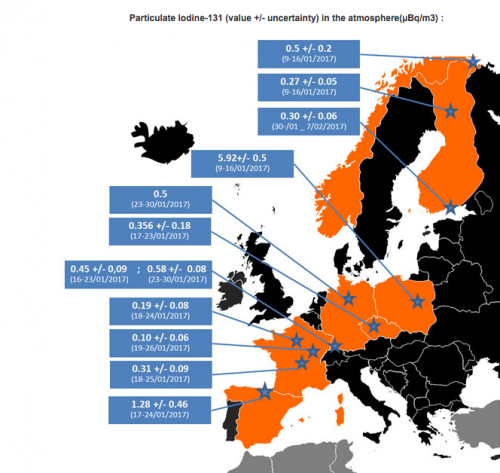Concerns about a potential, and so far unsubstantiated, nuclear “incident”, reportedly in the vicinity of the Arctic circle, spread in the past week after trace amounts of radioactive Iodine-131 of unknown origin were detected in January over large areas in Europe according to a report by the Institute for Radiological Protection and Nuclear Safety, the French national public expert in nuclear and radiological risks. Since the isotope has a half-life of only eight days, the detection is an indication of a rather recent release. As the Barents Observer adds, “where the radioactivity is coming from is still a mystery.”
The air filter station at Svanhovd – located a few hundred meters from Norway’s border to Russia’s Kola Peninsula in the north – was the first to measure small amounts of the radioactive Ionide-131 in the second week of January. Shortly thereafter, the same Iodine-131 isotope was measured in Rovaniemi in Finnish Lapland. Within the next two weeks, traces of radioactivity, although in tiny amounts, were measured in Poland, Czech Republic, Germany, France and Spain.
(Read the rest of the story here…)
